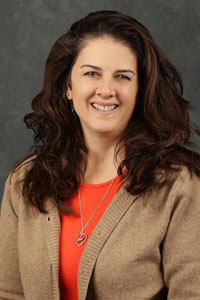The author and her husband, Duane, own and operate a 550-cow dairy in Cochranville, Pa.

It takes a lot of hands on our dairy farm to make sure each glass of milk is made with integrity and respect. The list of management practices is long, and the detail varies from farm to farm. The bottom line for all of us, though, is that we understand our responsibility of taking care of our animals.
Sometimes, the care is more cosmetic and noticeable to the outside than the daily details that typically happen on a dairy farm. When I think of outward care, I gravitate to cow shows and the fancy animals that dance on the shavings.
Decades ago, I worked at the All American Dairy Show in Harrisburg, Pa., when I joined Jack Remsberg’s cattle photography crew. This gave me a front row seat to some beautiful cows and heifers. I took a week off from family and farm responsibilities to help him set cows’ feet on a mat and place them just right, take care of the switch and keep the bucket handy, or make a bunch of noise to bring the animals head and ears to attention.
Believe it or not, this was a vacation for me and I loved every minute that I spent with cows and people. Of course, his wife Marcia’s brownies were a draw, too, but this gave me an opportunity to see the high level of grooming that goes into the incredible animals at the show.
Another amazing cow show is World Dairy Expo, and it does not take long to observe the dedication that farmers put into making their animals shine and walk with grace that week. The level of care that is happening both on the shavings and in the barns is a few notches higher than the attention we give daily.
I enjoy watching a good cow show, but I also know that when it comes to caring for our animals, the majority of dairy farmers are focused on the day-to-day routines as opposed to special days.
When I think about an important stage of detail, I always gravitate to the calves. Maybe it’s because that was my area of expertise for so many years, but the importance and value of getting good colostrum to the calves is critical. I can see from the health of the calves if the right amount of colostrum is given at the right time after birth. This is just one of the many decisions that impact their growth and development.
If you ask the herdsman, the most important area of responsibility is the overall health of the cow. There was a time in my farming career that I oversaw the fresh cow check early in the morning. This included a very early start for the day, taking cows’ temperatures, treating them when necessary, checking for overall fresh cow issues, and making sure the new mothers had the best possible start. After a few hours, I would head to the house, get the kids off to school, and start on calves.
I certainly was not alone in this work, and it was a team effort from the employees to make sure the right cows were sorted and placed into their proper pen. Although I was happy to pass this responsibility to our newly appointed intern and herdsman, it was a chore that gave me firsthand experience in caring for fresh cows. It deepened my appreciation for cows in that stage of their lactation, the importance of having eyes on them over this time.
Michelle is our nutritionist, and she manages a vital part of care for the dairy farm as she fine-tunes the diet for our cows. She makes sure that each bite is digestible, the forages and grains going into the ration are balanced, the cows are getting a quality meal, and that we are getting the most value from the cows in feed intake and milk production. The level of responsibility is high as she watches the cows’ body condition scores, their milk production and components, and their breeding and conception rates.
The heifer phase generally takes less oversight. After they are weaned, the months leading up to breeding age are probably the easiest time of care for us. We send them to pasture, and they are fed forage and grain. Someone looks at them every day, but overall, the maintenance is low unless there is an injury or a unforeseen health issue.
No matter what stage or what platform our animals are on, there is a thread of commonality that is evident during all these periods. All areas require a level of respect and admiration for the animal. We are passionate about the care we give to our animals and the nutrition that they give back to us.
I understand this is way too much information to think about every time I guzzle a glass of milk, but it is worth remembering from time to time. There is a lot of goodness that happens in 8 ounces.







